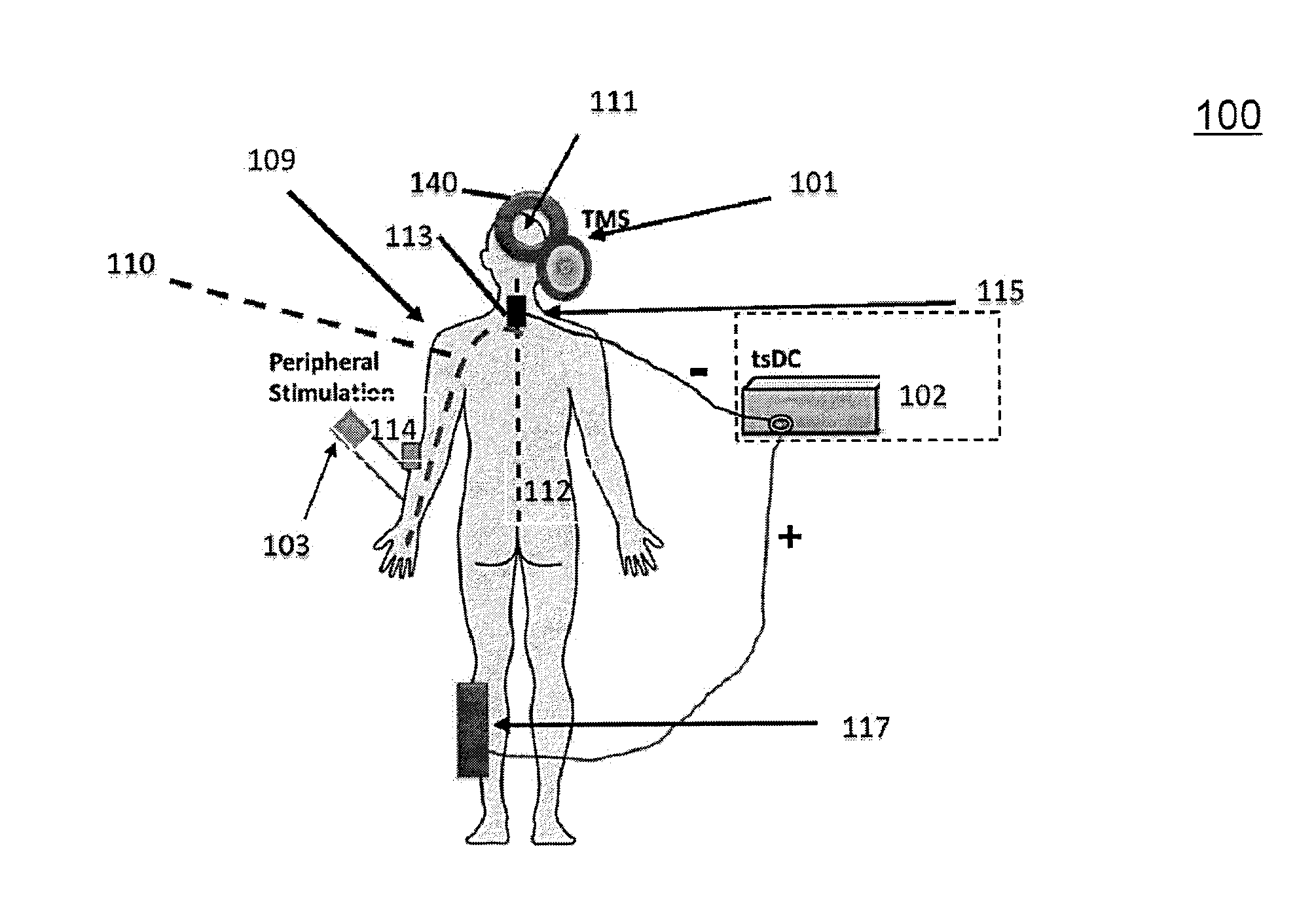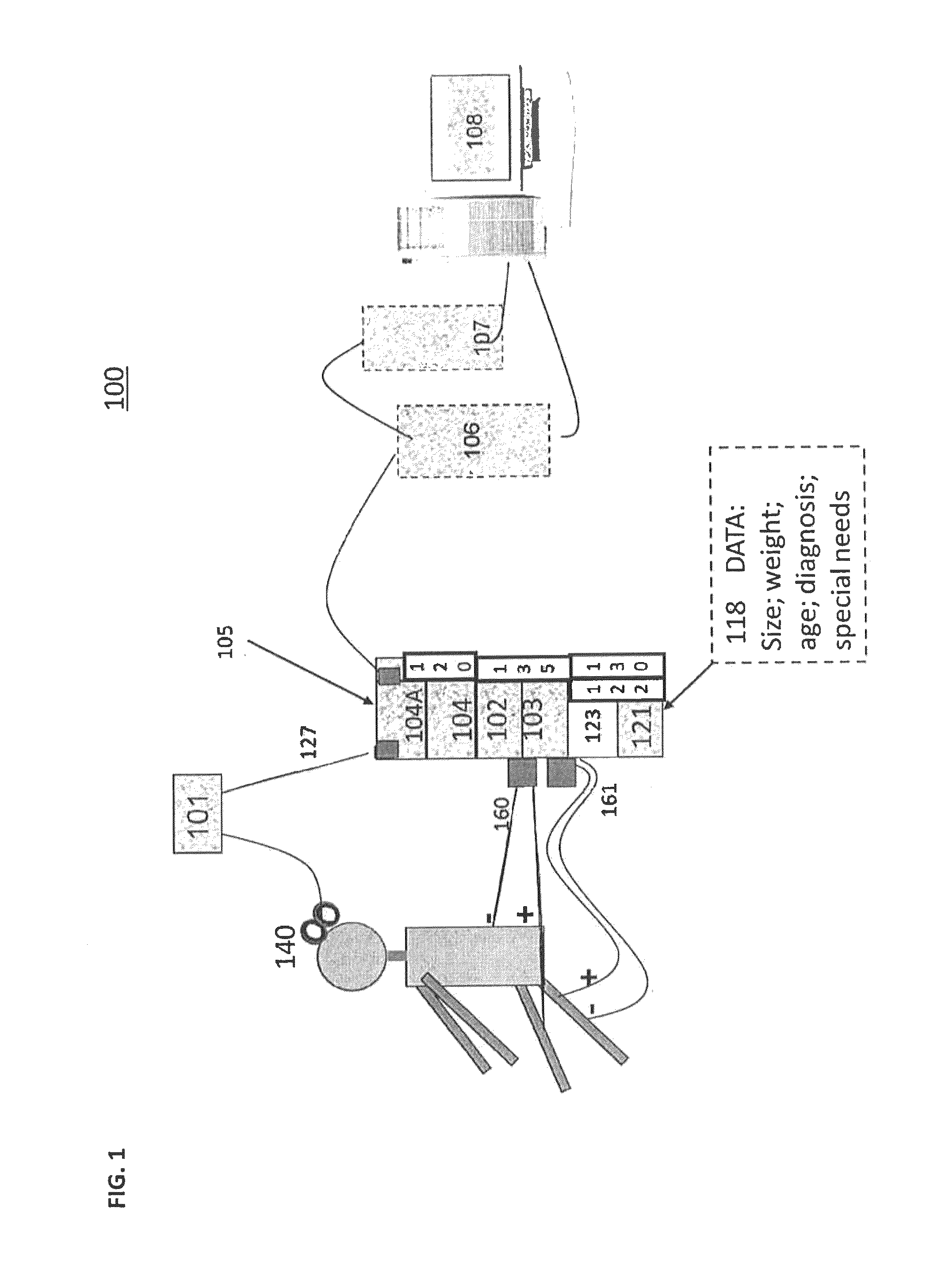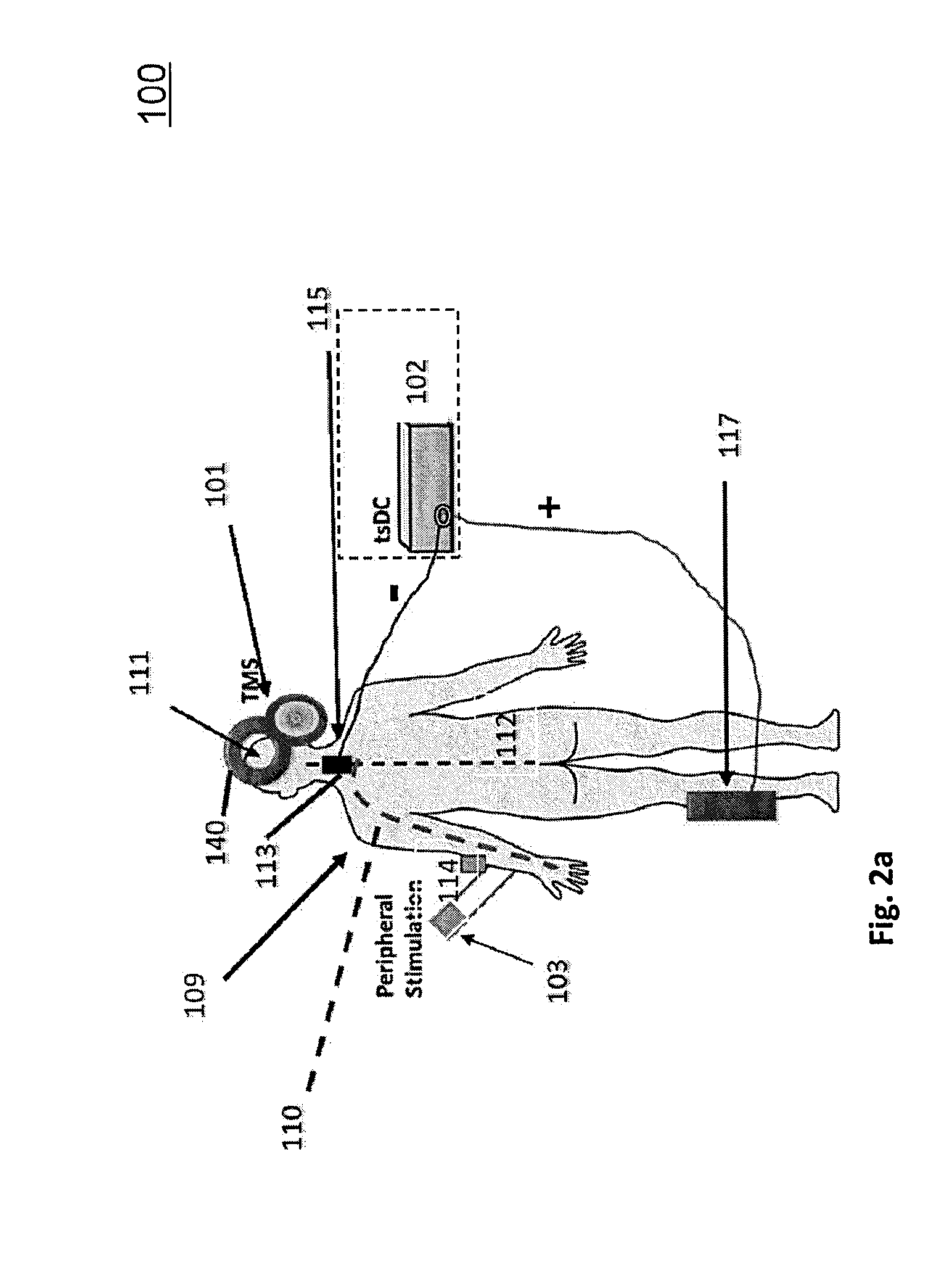Method and system for treatment of mobility dysfunction
a technology of mobility dysfunction and treatment method, applied in the direction of magnetotherapy using coils/electromagnets, external electrodes, therapy, etc., can solve the problems of impaired spinal cord connectivity and functional recovery, damage to the nervous system, and limited process, so as to improve neuromotor dysfunction, modulate associative plasticity, and improve neuromotor function. the effect of function
- Summary
- Abstract
- Description
- Claims
- Application Information
AI Technical Summary
Benefits of technology
Problems solved by technology
Method used
Image
Examples
Embodiment Construction
[0040]The following detailed description presents the currently contemplated modes of carrying out the invention. The description is not to be taken in a limiting sense, but is made merely for the purpose of illustrating the general principles of the invention, since the scope of the invention is best defined by the appended claims.
[0041]As used herein, the singular forms “a,”“an,” and “the” include the plural reference unless the context clearly dictates otherwise.
[0042]Except where otherwise indicated, all numbers expressing quantities of ingredients, reaction conditions, and so forth used in the specification and claims are to be understood as being modified in all instances by the term “about.”
[0043]Effective systems and methods for improving neural communication impairment of a vertebrate being and affecting motor activity of a peripheral body part are disclosed herein below.
[0044]One embodiment of the present teachings, method and apparatus, provides a system and method for pa...
PUM
 Login to View More
Login to View More Abstract
Description
Claims
Application Information
 Login to View More
Login to View More - R&D
- Intellectual Property
- Life Sciences
- Materials
- Tech Scout
- Unparalleled Data Quality
- Higher Quality Content
- 60% Fewer Hallucinations
Browse by: Latest US Patents, China's latest patents, Technical Efficacy Thesaurus, Application Domain, Technology Topic, Popular Technical Reports.
© 2025 PatSnap. All rights reserved.Legal|Privacy policy|Modern Slavery Act Transparency Statement|Sitemap|About US| Contact US: help@patsnap.com



